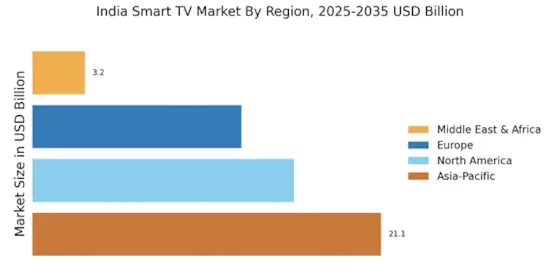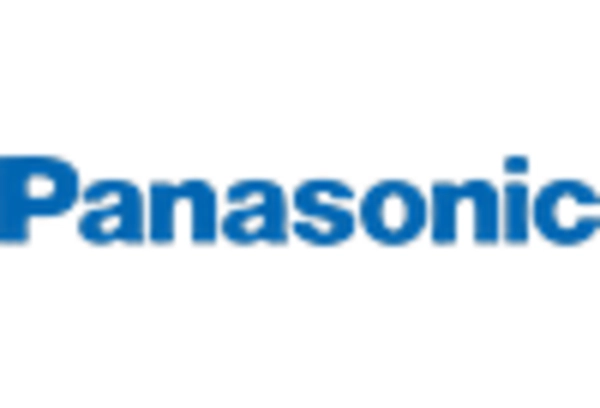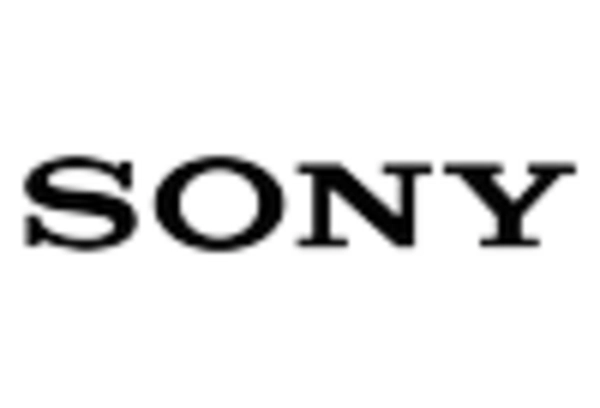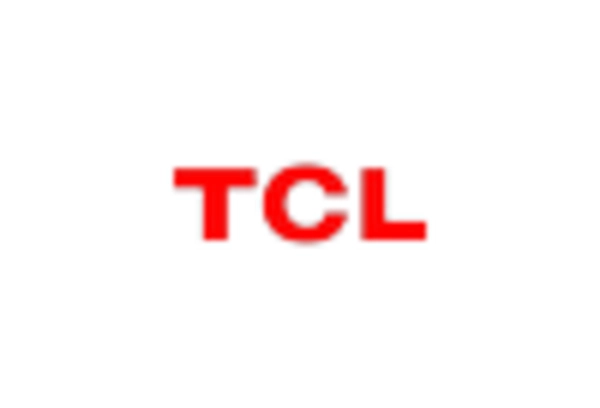Expansion of Affordable Smart TV Options
The India Smart TV Market is experiencing a significant expansion in the availability of affordable smart TV options. With the entry of various brands offering competitively priced models, consumers from diverse economic backgrounds are now able to access smart television technology. This democratization of smart TVs is evidenced by the fact that the average price of smart TVs has decreased by approximately 20% over the past two years. As a result, more households are adopting smart TVs, which is likely to contribute to a substantial increase in market penetration. This trend not only enhances consumer choice but also stimulates competition among manufacturers, further propelling the growth of the India Smart TV Market.
Shift Towards Home Entertainment Solutions
The India Smart TV Market is benefiting from a notable shift towards home entertainment solutions. As consumers increasingly prefer to enjoy cinematic experiences at home, the demand for high-quality smart TVs has surged. This trend is supported by the rise of streaming platforms that offer a wide array of content, including movies, series, and live sports. In 2025, it is estimated that the average household spends over 30% of its entertainment budget on streaming services, which in turn drives the need for advanced smart TVs. This shift not only enhances the viewing experience but also encourages manufacturers to innovate and develop products that cater to the evolving preferences of consumers, thereby fostering growth in the India Smart TV Market.
Rising Internet Penetration and Connectivity
The India Smart TV Market is significantly influenced by the rising internet penetration and improved connectivity across the country. As of October 2025, internet penetration in India has reached approximately 70%, facilitating access to online streaming services and content platforms. This increased connectivity enables consumers to fully utilize the capabilities of smart TVs, thereby enhancing their viewing experience. The proliferation of affordable broadband and mobile data plans has further contributed to this trend, allowing consumers to stream high-definition content seamlessly. Consequently, the growth in internet accessibility is expected to drive the adoption of smart TVs, thereby positively impacting the India Smart TV Market.
Increasing Consumer Demand for Smart Features
The India Smart TV Market is witnessing a notable surge in consumer demand for smart features. As technology advances, consumers are increasingly seeking televisions that offer internet connectivity, streaming capabilities, and interactive applications. This trend is reflected in the growing sales of smart TVs, which accounted for approximately 70% of total TV sales in India in 2025. The integration of features such as voice control, personalized content recommendations, and compatibility with smart home devices enhances the appeal of smart TVs. Consequently, manufacturers are compelled to innovate and enhance their product offerings to meet these evolving consumer preferences, thereby driving growth in the India Smart TV Market.
Technological Advancements in Display and Audio Quality
The India Smart TV Market is significantly impacted by technological advancements in display and audio quality. Innovations such as 4K resolution, OLED technology, and immersive sound systems are becoming increasingly prevalent in smart TVs. These advancements enhance the overall viewing experience, making smart TVs more appealing to consumers. In 2025, it is projected that over 50% of smart TVs sold in India will feature 4K resolution, reflecting a growing consumer preference for superior picture quality. As manufacturers continue to invest in research and development to improve display and audio technologies, the India Smart TV Market is likely to experience sustained growth, driven by consumer demand for high-quality entertainment solutions.

















Leave a Comment